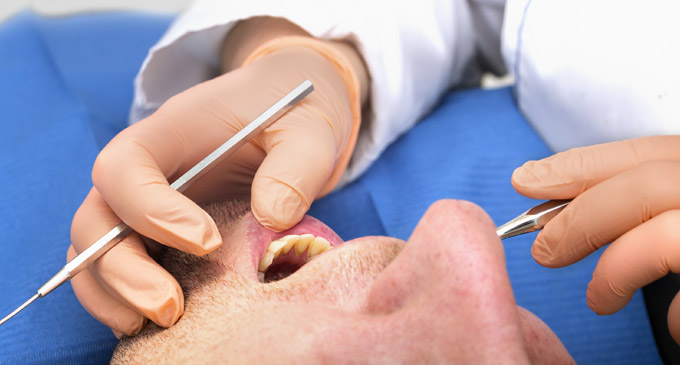
Gum disease is one of the most common dental problems in adults today, causing more tooth loss than even the
dreaded decay and cavities. While it’s a condition that most of the population will suffer from at some stage, treatment is highly effective, and so long as the problem is caught fairly early on, it can be dealt with before major damage or tooth loss occurs.
Two Types of Gum Disease and Their Symptoms
The two main conditions that come under the banner of gum disease are gingivitis and periodontal disease, which are both results of the same overall problem. Gingivitis is the earlier stage of the complaint, where the gums become inflamed, sore, and swollen. This often makes them bleed, especially during brushing or when eating. Gingivitis can also be accompanied by bad breath, although this can also be caused by many other complaints and on its own is not a reliable symptom.
If gingivitis is left unchecked, it can develop into the much more serious periodontal disease which is where the risk of tooth loss really begins. With this condition, the inflammation can move down into the teeth roots and even the jawbone, where it can often lie undetected and symptom-free.
Sometimes periodontal disease shows itself through a pus discharge coming from the gums, or by the appearance of abscesses, but for many sufferers the first real sign is when the damage has progressed far enough to cause loose or wobbly teeth. This means that any symptoms of gum disease should be taken very seriously, even if they may only signify the less damaging gingivitis, so that the condition can be caught early.
Gum Disease Treatment
The underlying cause of gum disease is poor dental hygiene. If your brushing and flossing regime doesn’t remove enough of the natural plaque build up from your teeth, some of the bacteria that it contains can begin to cause gum irritation which is the first step towards full gum disease. Even once gum disease has started, an improvement in plaque removal will stop gingivitis from progressing and in most cases will begin to clear the symptoms.
If you’re afflicted by gingivitis, your dentist will give your teeth a thorough clean to completely remove the plaque, and advise you on the best ways to improve your dental hygiene in future.
Periodontal disease is more difficult to treat as the problem has already gone deeper into your dental structures. In many cases, your dentist will need to carry out a procedure known as ‘root planing‘ to clear the deep bacterial infection. This will normally be carried out under a local anesthetic and will leave the treated areas feeling a little tender for a few days, although the success levels of the treatment are very high.
After the Treatment
As stated, the main cause of gum disease is a build-up of plaque and certain types of the bacteria it contains, and so proper oral hygiene will prevent gingivitis returning and progressing into periodontal disease. This will include thorough brushing, flossing, and the use of an antibacterial mouthwash on a regular basis, upon all of which your dental surgeon will be an excellent source of advice.
The most important thing with gum disease is to catch it early, before it causes any real damage. If you spot any of the signs, no matter how minor, you should arrange a visit to your dental surgery as soon as possible.


